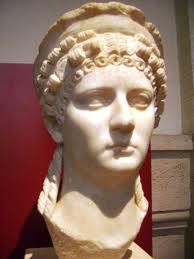The Cinderella Century in Early Christianity?
by larryhurtado
Chatting with a colleague yesterday, the importance of the second century CE came up, and we agreed that it’s a crucial period insufficiently taken account of in scholarship, at least in comparison with the massive attention given to the NT and even to later patristic times/figures/texts. Back in the 80s, there was a journal that ran for a number of years entitled The Second Century (which was re-founded as Journal of Early Christian Studies), apparently indicative of a certain recognition of the importance of the period. But I think that we still don’t really give due attention to it.
For many (most?) NT scholars, it’s sort of treated almost as an afterthought. Given that the NT includes our earliest extant Christian texts (especially Paul’s letters), for any question about “origins” of Christianity, these texts are obviously of singular importance. Also, for many students and scholars, the NT is scripture, and so holds a unique importance, prompting the fervent attention given to probing every detail about these texts.
But the canonical line is a theological one, and there is in fact some chronological overlap between some of the NT writings and some extra-canonical ones. 1 Clement, for example, is commonly dated to the 90s, roughly contemporary with commonly posited dates for Revelation, and perhaps 2 Peter and some other NT texts.
Indeed, among the collection of early Christian texts usually referred to as “the Apostolic Fathers”, there are at least several more that likely overlap in time with some NT writings. One of the interesting publishing developments in recent years was the commitment of Baker Academic Press to the fine hand-edition of the Apostolic Fathers edited by Michael Holmes (developed from the earlier edition by J. B. Lightfoot and J. R. Harmer). The 3rd edition (2007) is now the best available hand-edition of these important texts: 1 Clement, 2 Clement, Letters of Ignatius of Antioch, Letter of Polycarp to the Philippians, Martyrdom of Polycarp, Didache, Epistle of Barnabas, Shepherd of Hermas, Epistle to Digonetus, Fragments of Papias.
For Patristics scholars, it appears that the second century is often treated as the warm-up period, before the real “game” gets going: That “game” usually focused on the creedal developments/controversies of the 4th century and later, the emergence of imperially-backed Christianity, the explosive development of Christian architecture and art, etc. By contrast, the writers/writings of the second century seem often to be treated as less interesting.
But one scholar who focused on the period was Eric Osborn (Professor, University of Melbourne). Osborn was mainly interested in the theological and intellectual developments of the period, and in a series of books emphasized the significance of key figures of the second century in the formation of an impressive Christian intellectual effort. Among his studies from which I learned much: The Beginning of Christian Philosophy (Camabridge Univ. Press, 1981).
But the book that I found most stimulating from Osborn was The Emergence of Christian Theology (Cambridge Univ. Press, 1993). Concentrating on “five creative Christian thinkers of the second century,” Justin, Athenagoras, Irenaeus, Clement of Alexandria and Tertullian, Osborn argues impressively that “Christianity, using the Bible and philosophy, made monotheism axiomatic in its response to the hostile environment in which it developed. Christian theology argued for the one God who was the rational clue to metaphysics, ethics and logic, and in so doing laid the foundations for the European intellectual tradition.”
Here are a few of Osborn’s provocative observations:
“The emergence of Christian theology and the beginning of European culture are closely entwined. Remove Christian ideas from Europe, and its philosophy, art, literature and music cannot be understood. Yet the emergence of Christian thought was precarious, ‘the nearest run thing you ever saw in your life’ [a line originally referring to the battle of Waterloo], and its survival has been through challenge and dispute.” (p. 1)
“This is one of those brief periods of human invention when earlier concepts become museum pieces. Any such expansions requires at least four things: some thinkers to think, new resources to use, questions to answer, and an opposition to challenge.” (p. 1)
“Fortunately for posterity, Christian apologists [the second-century figures he studies] had to argue for the lives.” (p. 3)
“By the end of the second century, Christianity was on the way to dominance in the Roman empire. At the end of the first century it did not count, yet at the end of the fourth century it reigned supreme and other religions did not count. ‘Among all leisurely developments, de longue duree, this one of the period AD 100–400 might fairly be given pride of place in the whole of Western history’ [citing Ramsay McMullen].” (p. 9)
There is much more, but these will serve to illustrate the gain to be had in reading Osborn’s study. The second century Christian figures, texts and developments have still not had the attention that they deserve. The NT writings were (at least largely) written in the first century CE, but it was across the second century that they began to form what would become the NT canon. So, “NT studies/Christian origins” must include at least the second century in its proper scope.













